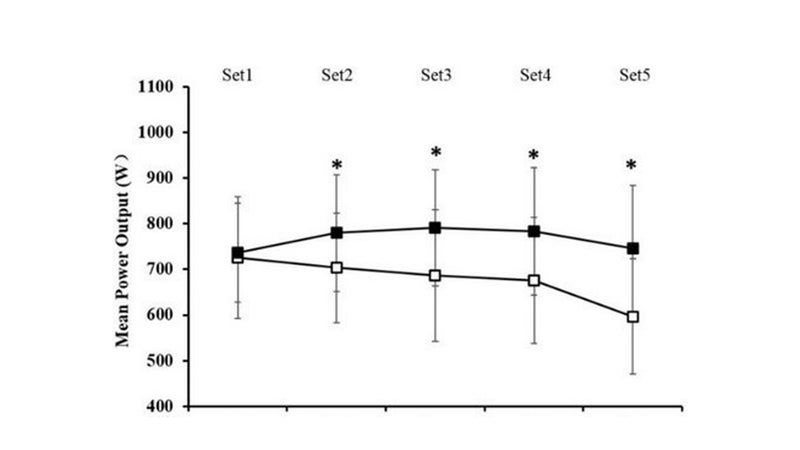From a purely scientific point of view, the idea that you can alter your physical limits by trickling a bit of electric current through your brain is pretty amazing. Without changing anything about how your muscles are contracting, how hard youÔÇÖre breathing, or how fast your heart is beating, you can (in theory) go farther or fasterÔÇöbecause electric stimulation applied to precisely the right part of the brain makes everything feel easier. ItÔÇÖs a pretty stunning illustration of the brainÔÇÖs role in setting physical limits.
In practice, the waters are a bit muddier. Should we really celebrate the advent of a new era of brain doping, in which anyone who aspires to the top of the podium has to wire up their cranium? IÔÇÖve written a lot about a technique called transcranial direct-current brain stimulation in recent years (most recently here), and IÔÇÖve been secretly relieved that,┬áalthough it seems to work in the highly controlled environment of the laboratory, thereÔÇÖs been little or no convincing evidence that commercially available devices like the one made by do the same.
For better or worse, that may be changing. Last month, two new studies were published that found significant improvements in athletic performanceÔÇöone running, one cyclingÔÇöusing HaloÔÇÖs brain-stimulation headphones. Both studies are small, and both leave some questions unanswered. But as brain stimulation drifts toward mainstream, itÔÇÖs worth taking a look at the new findings.
When you run a weak electric currentÔÇötypically about 2 milliamps, hundreds of times smaller than whatÔÇÖs used in electroconvulsive therapyÔÇöthrough your brain, it alters the excitability of the affected neurons, making them a little more likely to fire during the hour or so after brain stimulation. There are lots of different theories (and conflicting evidence) about how or why this technique might boost endurance, but the one I find most convincing is as follows:
To pedal a bike, you need a region of your brain called the motor cortex to send signals to your muscles. If you apply brain stimulation to your motor cortex, those brain signals can be passed from neuron to neuron more ÔÇťeasily.ÔÇŁ According to one theory,, at least in part, by the magnitude of the brain activation needed to make your muscles move. So if itÔÇÖs easier to generate and transmit the necessary brain signals, the act of pedaling or running at a given pace will feel easierÔÇöand so youÔÇÖll be able to go faster or sustain a given pace for longer.
As a result, the key finding in some of the more convincing brain stimulation papers has been that improved endurance performance goes hand-in-hand with a reduced sense of effort right from the start of exercise (as shown, for example, in the graph in this article). ThatÔÇÖs the smoking gun to look for.
One of the new studies, , comes from a group of researchers in South Korea led by Joung-Kyue Han of Chung-Ang University. Ten volunteers did a time-to-exhaustion running test at 80 percent of VO2max, a pace they could sustain for roughly 20 minutes. Before the running test, they received 20 minutes of either real or sham brain stimulation with Halo headphones. Each volunteer performed the test twice a few days apart, once in either condition, in randomized order.
After the real brain stimulation, the runners lasted about 15 percent longer in the endurance test: 21.18 minutes compared to 18.44 minutes on average. Seven of the 10 volunteers had better results with brain stimulation. Because of the additional energy required for even subtle changes of pace, time-to-exhaustion tests tend to produce much bigger changes in performance than races or time trials: a conservative estimate is that a 15 percent increase in time-to-exhaustion is the equivalent of going about 1 percent faster in a race. Still, thatÔÇÖs a big deal.
None of the below-the-neck measurements could explain the change in performance: heart rate, oxygen consumption, and breathing were all the same at any given time point with or without brain stimulation. Unexpectedly, the subjective rating of perceived exertion was also the same in both conditions. That undercuts the idea that you last longer on the treadmill because it feels easier, and conflicts with the previous results I mentioned above. While thereÔÇÖs a lengthy discussion of this finding in the paper, the bottom line is that theyÔÇÖre not sure what to make of it.
The second paper, by a group led by Xinyan Zheng of Shanghai University of Sport in China, looks at sprint cycling and cognitive performance. The design is pretty similar, with nine volunteers who do a cycling task that involves five all-out sprints of six seconds each with 24 seconds of easy pedaling in between.
The added twist was the inclusion of two cognitive tests, one before the brain stimulation and another after the cycling test. They used something called the Stroop Test, which involves responding to color words (like ÔÇťgreenÔÇŁ) as they flash on a screen in a font color that may or may not match the word. Trust me, itÔÇÖs even more confusing than it sounds when you try to do it! ItÔÇÖs a test of executive function thatÔÇÖs sometimes used to assess how your reaction time and decision-making are affected by mental fatigue.
Once again, the subjects performed better after brain stimulation, although in these ultra-short six-second sprints they couldnÔÇÖt measure perceived exertion (which was presumably maxed out each time anyway). HereÔÇÖs what the average power output in the sprints looked like, with (dark squares) and without (light squares) brain stimulation:

The cognitive results were a little harder to parse, but it does appear there was a benefit. In the ÔÇťincongruentÔÇŁ Stroop test (the trickier situation where the word and font color are mismatched), the response accuracy rate decreased after exercise following sham brain stimulation, but increased after exercise following real stimulation. Some of the other outcomes like reaction time and ÔÇťcongruentÔÇŁ accuracy donÔÇÖt show an effect, so IÔÇÖm much less confident in these results, but the researchers point out that if the cognitive boost is real, it could be significant in sports where decision-making matters, like soccer, and technical sports like skiing and mountain-biking.
Interesting stuff, but at risk of sounding like a party-pooper, let me circle back to some caveats. The discussion sections of both papers float all sorts of ÔÇťbio-plausibleÔÇŁ ideas about how the brain stimulation might be working: brain area A might be talking to brain area B which might be talking brain area C, all of which play different roles, and somehow this results in you running faster even though your sense of effort hasnÔÇÖt really changed. There are a lot of ÔÇťmightsÔÇŁ in there.
(Okay, I canÔÇÖt resist. HereÔÇÖs a brief sample from the cycling paper: ÔÇťFirst, sensory input from the peripheral system to M1 reduces motor output (supraspinal fatigue), and a neural pathway that interconnects the spinal cord, thalamus, secondary somatosensory cortex, medial insular cortex, posterior cingulate cortex, anterior cingulate cortex, premotor area, supplementary motor area (SMA), and primary motor cortex constitutes the inhibition systemÔÇŽÔÇŁ The paragraph goes on like that for a while, then concludes: ÔÇťThis hypothesis needs to be┬áevaluated in future studies.ÔÇŁ)
Now, just because something is complicated doesnÔÇÖt mean itÔÇÖs wrong. But the failure of the studies to offer some clear insights on how performance is enhanced is a bit worrying. IÔÇÖd be much more confident in the results if the running study had seen a change in perception of effort, as previous lab-based studies have.
Another thing IÔÇÖm curious about is the placements of the electrodes. To run an electric current, you need two electrodes. In this form of brain stimulation, the anode will increase the excitability nearby neurons; the cathode will have the opposite effect and decrease excitability. Back in 2017, University of Kent researcher Alexis Mauger suggested that one of the reasons for inconsistent results in brain stimulation studies was that the negative effects of the cathode were interfering with the positive effects of the anode. By moving the cathode off the skull and onto the shoulder, he got more consistently performance-enhancing results.
The configuration of the Halo headphones in the studies involves three electrodes: an anode right at the top of the head, and two cathodes partway down toward the ear on either side (picture a typical set of headphones with the band running across the top of the head). In theory this sends excitability-enhancing current through the motor cortex on both sides of the top of the head. But how crucial is the exact position of the electrodes? Are there are negative effects from having the cathodes so close to the anode?
One answer to those questions would be: hey, the runners and cyclists improved their performance, so obviously the electrodes are fine the way they are. But thatÔÇÖs a risky conclusion. This is a pretty sexy new technology, and IÔÇÖm guessing that there are dozens of labs around the world are running experiments with Halo. These are the first performance-related studies IÔÇÖve seenÔÇöbut itÔÇÖs impossible to know how many others are sitting in desk drawers because the results were deemed too boring to publish.
In other words, these studies by no means offer the final word on HaloÔÇÖs performance. There are plenty of reasons to remain cautious. Still, when considered in conjunction with the previous lab-based studies, the findings are awfully suggestive. My best guess at this point is that carefully implemented brain stimulation is probably capable of enhancing endurance performance. Until now, IÔÇÖve been pretty skeptical that HaloÔÇÖs setup meets that threshold. But IÔÇÖm prepared to reconsider.
My new book, Endure: Mind, Body, and the Curiously Elastic Limits of Human Performance, with a foreword by Malcolm Gladwell, is now available. For more, join me on Twitter and Facebook, and sign up for the Sweat Science email newsletter.


